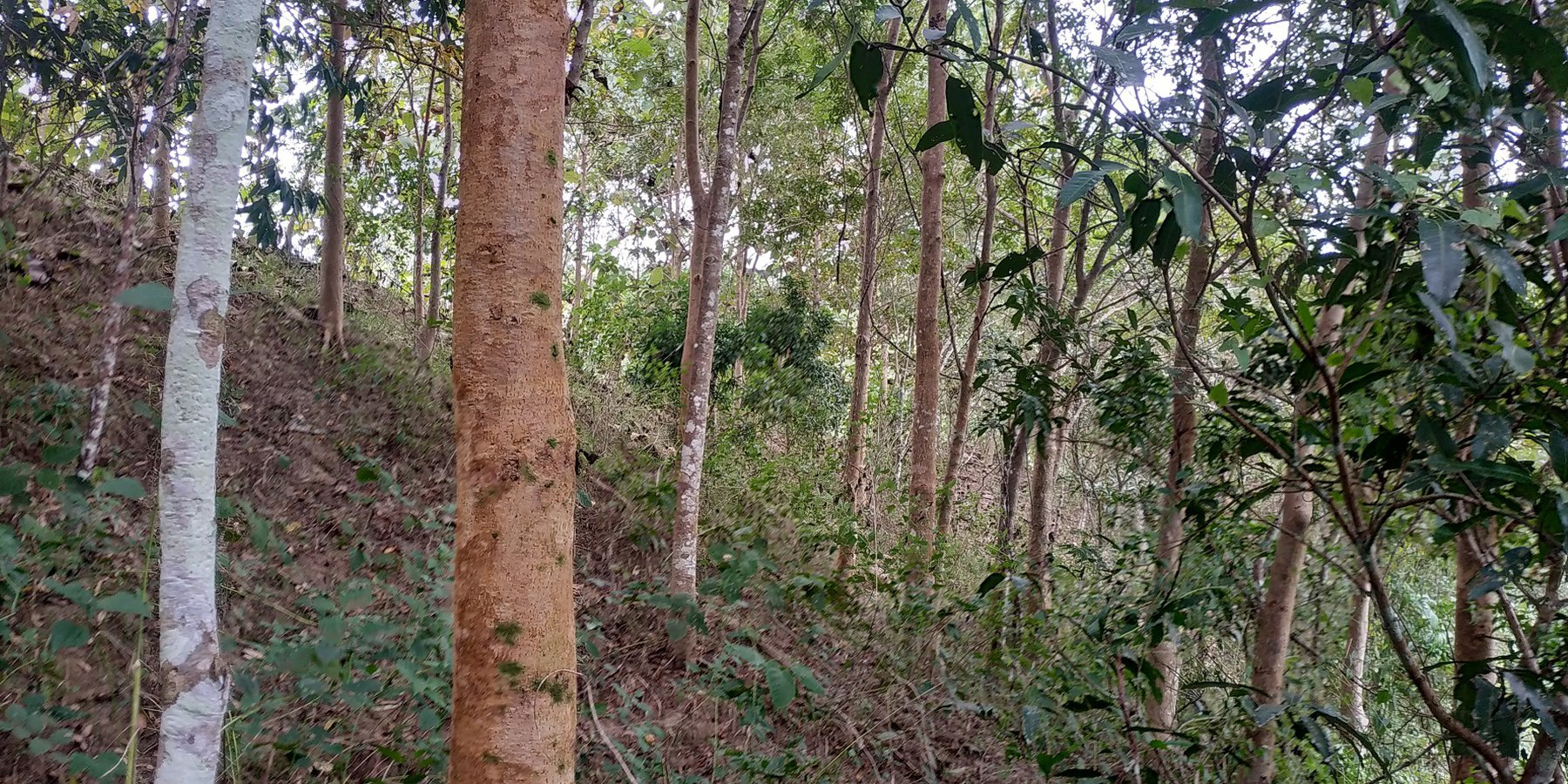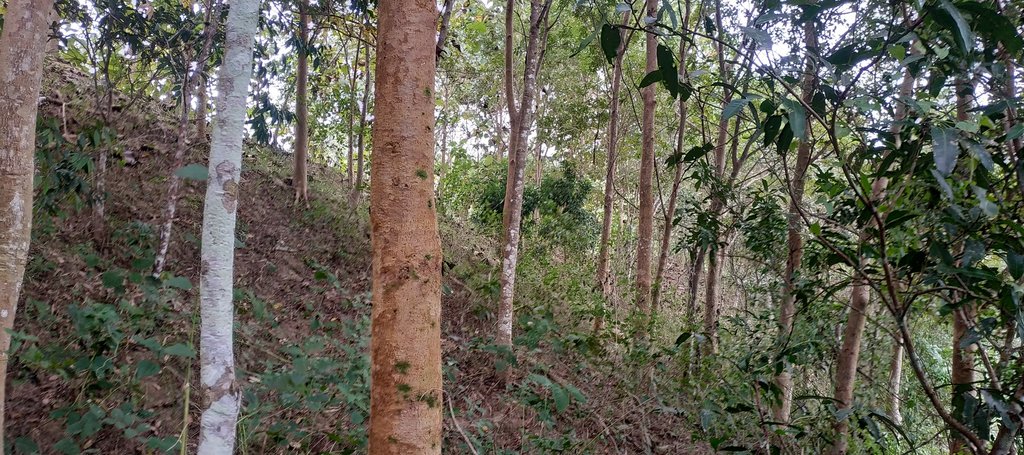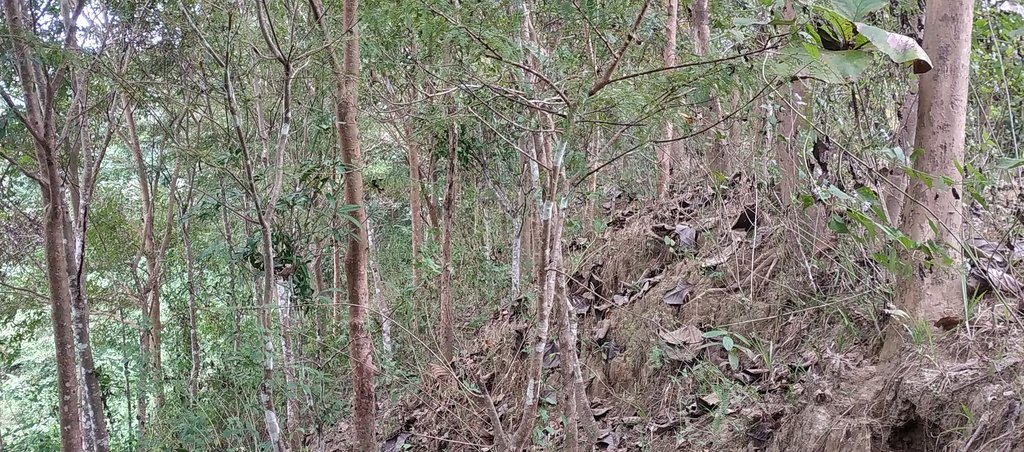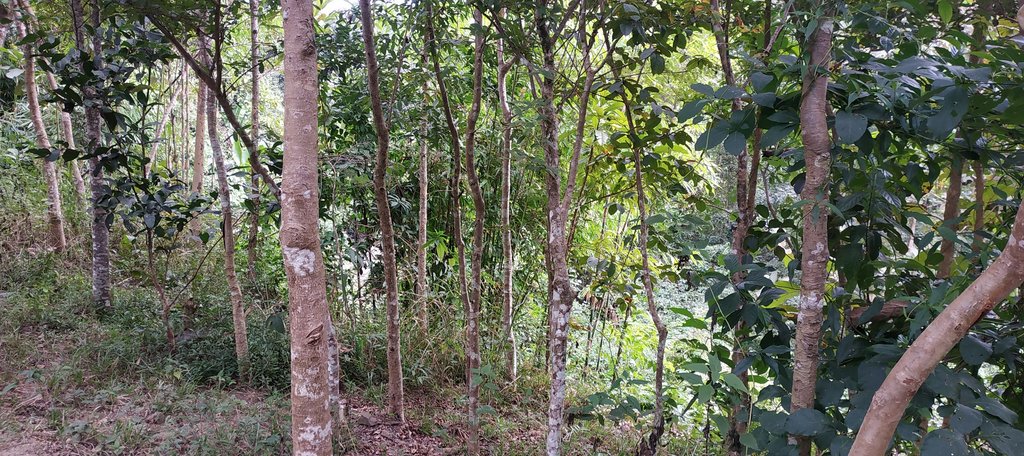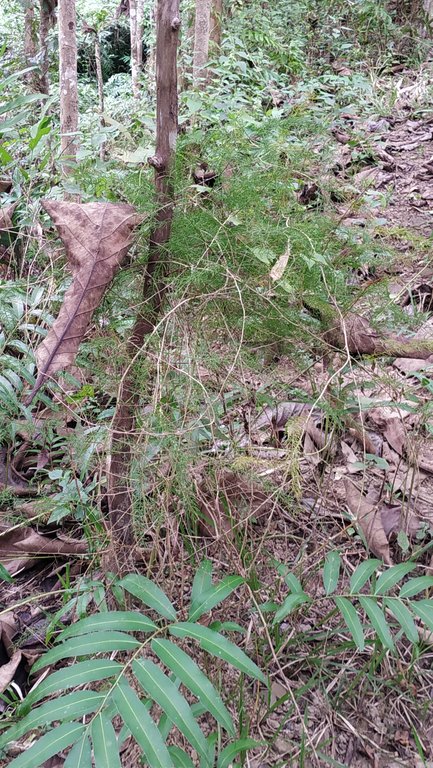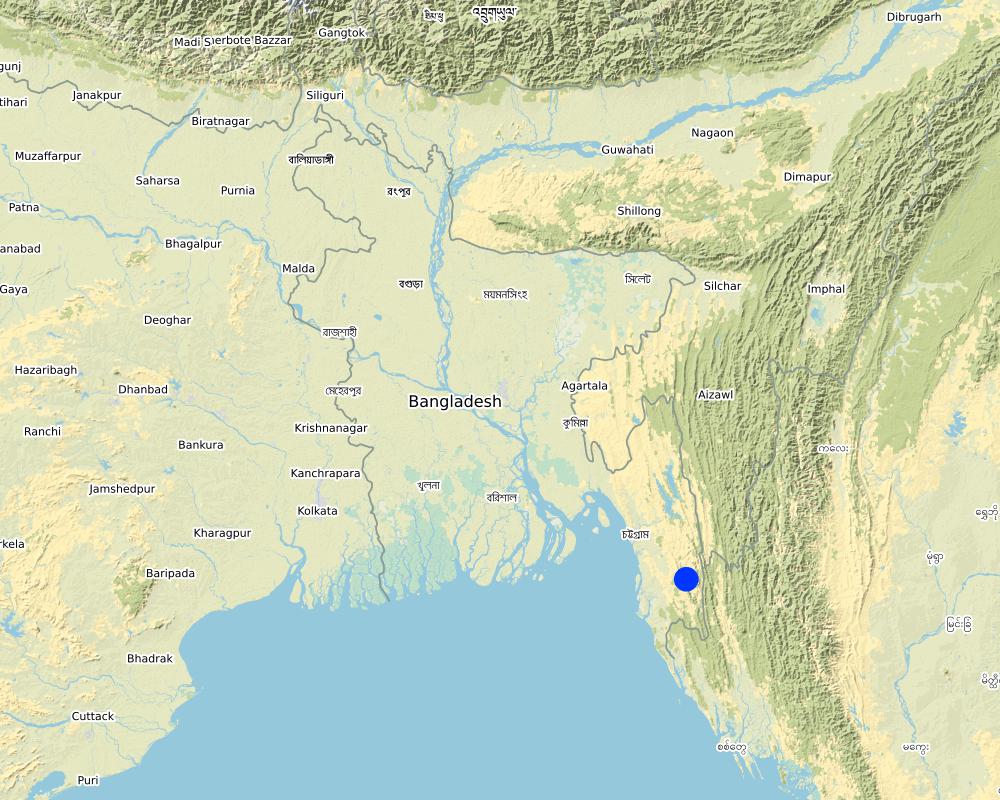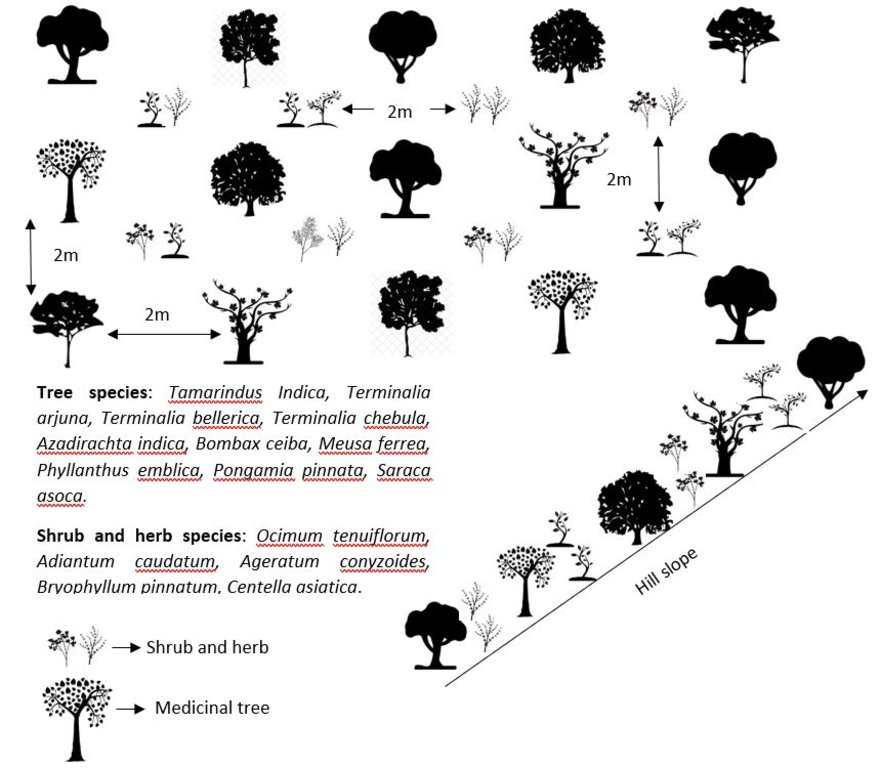Protection from land degradation through conservation of medicinal plants by involving ethnic communities. [Bangladesh]
- Creation:
- Update:
- Compiler: Fazlay Arafat
- Editors: Mutasim Billah, Md. Arfanuzzaman
- Reviewers: Nicole Harari, Rima Mekdaschi Studer, Ursula Gaemperli
Herbal medicine plantation to stop land degradation
technologies_4287 - Bangladesh
View sections
Expand all Collapse all1. General information
1.2 Contact details of resource persons and institutions involved in the assessment and documentation of the Technology
Key resource person(s)
land user:
Thoai Uba
Bolipara Nari Kalyan Somity (BNKS)
Bangladesh
land user:
Shing Nue Hla
Bolipara Nari Kalyan Somity (BNKS)
Bangladesh
Name of project which facilitated the documentation/ evaluation of the Technology (if relevant)
Decision Support for Mainstreaming and Scaling out Sustainable Land Management (GEF-FAO / DS-SLM)Name of the institution(s) which facilitated the documentation/ evaluation of the Technology (if relevant)
FAO Bangladesh (FAO Bangladesh) - BangladeshName of the institution(s) which facilitated the documentation/ evaluation of the Technology (if relevant)
IUCN-The World Conservation Union (IUCN-The World Conservation Union) - Bangladesh1.3 Conditions regarding the use of data documented through WOCAT
The compiler and key resource person(s) accept the conditions regarding the use of data documented through WOCAT:
Ja
1.4 Declaration on sustainability of the described Technology
Is the Technology described here problematic with regard to land degradation, so that it cannot be declared a sustainable land management technology?
Nee
2. Description of the SLM Technology
2.1 Short description of the Technology
Definition of the Technology:
The indigenous community in Bolipara village of the Thanchi upazlia (sub-district) of the Bandarban district are reducing or preventing land degradation through the cultivation and conservation of medicinal plants. This practice provides the raw material needed, by local traditional healers, to produce herbal medicines for the indigenous and tribal peoples.
2.2 Detailed description of the Technology
Description:
The Chittagong Hill Tracts (CHT) are well-renowned for its unique physiography that harbors rich biodiversity, and for its distinct and rich culture, traditional, and customary practices because of the predominance of many indigenous communities. It is also one of the few remaining areas in Bangladesh where traditional environmental knowledge (TEK) plays an important part in the daily life and customary practices of indigenous communities. Medicinal plants, of course, are a key component of the local health care system. However, the production and use of traditional medicines (mostly herbal in nature) substantively declined as medicinal plants have become rarer – this is due to rapid changes in land use patterns driven by population growth and economic trends. The risk that interest in and local knowledge of medicinal plant use will reduce or even disappear over time as has occurred in other parts of the world, changing the very nature of indigenous life. Land degradation is another major ecological concern for this area. Shifting cultivation with curtailed fallow periods, deforestation, and unplanned cultivation along the hill slopes has caused land degradation in Bolipara union. It is located in Thanchi upazila (longitude 21º78´, latitude 92º42´) under Bandarban hill district of Bangladesh. The total population of the union is more than 10,000. The ethnic communities living in the area include Bowm, Chakma, Khumi, Marma, Mru, Tripura and Chack. Most of the family depends on agriculture and horticulture for their livelihood. BNKS (Bolipara Nari Kalyan Somity) is an NGO who work here to promote the socio-economic and cultural status of the marginalized and socially excluded peoples. ‘Bolipara Kobiraj Kalyan Somiti’ is another local institution of traditional herbal healers.
In 2008, International Union for Conservation of Nature (IUCN) took the initiative to reduce and prevent land degradation in Bolipara through the cultivation and conservation of medicinal plants by indigenous communities. While forest conversion reduces the diversity and availability of medicinal plants, reforestation with medicinal plants can promote and accelerate forest succession on a previously deforested site. As a part of the IUCN project, medicinal tree species like Tamarindus indica, Terminalia arjuna, Terminalia bellerica, Terminalia chebula, Azadirachta indica, Bombax ceiba, Meusa ferrea, Phyllanthus emblica, Pongamia pinnata, and Saraca asoca were planted on the degraded slopes with a 2m x 2m spacing. In between the tree lines, shrub and herb species like Ocimum tenuiflorum, Adiantum caudatum, Ageratum conyzoides, Bryophyllum pinnatum, and Centella asiatica were planted with same spacing in a crisscross manner. The establishment of medicinal plants requires various inputs and extension services from medicinal plant nurseries to demonstration sites and the engagement of communities and community groups (please see more details under the download link: https://portals.iucn.org/library/node/9589).
In this instance, the planting and conservation of medicinal plants was conducted under the supervision of Buddhist monks (from local temples) and ‘Bolipara Kobiraj Kalyan Somiti’(BNKS). The local community were involved with Nursery preparation (seed collection, bed preparation, poly-bag preparation, manuring, irrigation, etc.), preparation of plantation site (jungle cutting, debris collection, preparation of inspection paths, etc.), plantation activities (pit preparation, tying up of plants with sticks for support, application of fertilizers, compost and biocide, etc.) and maintenance activities (vacancy filing, weeding, fertilizer application, etc.). After the medicinal plantation was established in 2008, the degraded land started to regain its health since trees and plants positively influenced the understory microclimate, the structural complexity of vegetation, and the development of humus layer. The indigenous medicinal plants and trees, because of their deep roots, also reduced topsoil erosion, and prevented gully erosion formation. Currently, the site is observed to have good canopy cover, and functions as a good habitat for a number of bird species and monkeys. The local herbal healers have the access to the plantation site and are able to obtain the raw materials needed to produce their medicines in short periods of time and with less effort. The local community people can collect dry leaves and dead branches from the plantation for firewood. This technology is simple enough to implement by the local people without any need of external financial and technical support. The local herbal healers have to collect raw materials to prepare their medicines.
Medicinal plants are an important component of Bangladesh’s national wealth. Even as they serve as important therapeutic agents in various traditional and modern medicines, our understanding of their abundance, distribution, and novel pharmaceutical compounds is poor. The planting/cultivation and conservation of medicinal plants and adequate engagement of local indigenous communities of Bolipara village is a good example of an action that can promote sustainability in all its dimensions (reduced land degradation, social and economic well-being through increase in raw material availability for traditional healers, etc.). Lack of marketing channel of medicinal raw materials and lack of scientific knowledge and tools for medicinal raw materials handling is a potential threat for sustaining the technology in the long run. The capacities of the local herbal healers can be strengthened through training and the marketing channel can be improved through engaging private sector in traditional medicine value chain.
2.3 Photos of the Technology
2.5 Country/ region/ locations where the Technology has been applied and which are covered by this assessment
Country:
Bangladesh
Region/ State/ Province:
Bandarban
Further specification of location:
Bolipara village, Thanchi
Specify the spread of the Technology:
- evenly spread over an area
If precise area is not known, indicate approximate area covered:
- < 0.1 km2 (10 ha)
Is/are the technology site(s) located in a permanently protected area?
Nee
Map
×2.6 Date of implementation
Indicate year of implementation:
2008
2.7 Introduction of the Technology
Specify how the Technology was introduced:
- through projects/ external interventions
Comments (type of project, etc.):
"Conservation Through Practices" project implemented by IUCN Bangladesh and BNKS. The main objective of the project was to conserve medicinal plants in degraded land areas by the supervision of Monks in Buddhist temples.
3. Classification of the SLM Technology
3.1 Main purpose(s) of the Technology
- improve production
- reduce, prevent, restore land degradation
- preserve/ improve biodiversity
- create beneficial economic impact
- create beneficial social impact
3.2 Current land use type(s) where the Technology is applied
Land use mixed within the same land unit:
Nee

Forest/ woodlands
- Tree plantation, afforestation
Tree plantation, afforestation: Specify origin and composition of species:
- Mixed varieties
Type of tree plantation, afforestation:
- subtropical humid forest plantation - broadleaf
- Tamarindus Indica, Terminalia arjuna, Terminalia bellerica, Terminalia chebula, Azadirachta indica, Bombax ceiba, Meusa ferrea, Phyllanthus emblica, Pongamia pinnata, Saraca asoca, Ocimum tenuiflorum, Adiantum caudatum, Ageratum conyzoides, Bryophyllum pinnatum, Centella asiatica.
Are the trees specified above deciduous or evergreen?
- evergreen
Products and services:
- Timber
- Fuelwood
- Fruits and nuts
- Other forest products
- Nature conservation/ protection
- Recreation/ tourism
- Herbal Medicine
3.3 Has land use changed due to the implementation of the Technology?
Has land use changed due to the implementation of the Technology?
- Yes (Please fill out the questions below with regard to the land use before implementation of the Technology)
Land use mixed within the same land unit:
Nee

Unproductive land
Specify:
The hill slope remains barren other than covered by some natural herbs and shrubs.
Remarks:
Soil erosion and land slide was a common phenomena in that area.
3.4 Water supply
Water supply for the land on which the Technology is applied:
- mixed rainfed-irrigated
3.5 SLM group to which the Technology belongs
- forest plantation management
- improved ground/ vegetation cover
- improved plant varieties/ animal breeds
3.6 SLM measures comprising the Technology

vegetative measures
- V1: Tree and shrub cover
3.7 Main types of land degradation addressed by the Technology

soil erosion by water
- Wt: loss of topsoil/ surface erosion
- Wm: mass movements/ landslides

biological degradation
- Bc: reduction of vegetation cover
- Bs: quality and species composition/ diversity decline
3.8 Prevention, reduction, or restoration of land degradation
Specify the goal of the Technology with regard to land degradation:
- reduce land degradation
4. Technical specifications, implementation activities, inputs, and costs
4.1 Technical drawing of the Technology
Technical specifications (related to technical drawing):
Dimension of plantation: across the slope;
Spacing between Tree species: 2m X 2m;
Spacing between Shrub and herb species: 2m X 2m;
shrub and herb species planted in between tree lines with crisscross manner
Author:
Md. Fazlay Arafat
Date:
21/04/2019
4.2 General information regarding the calculation of inputs and costs
Specify how costs and inputs were calculated:
- per Technology area
Indicate size and area unit:
1 hectare
If using a local area unit, indicate conversion factor to one hectare (e.g. 1 ha = 2.47 acres): 1 ha =:
2.47 acres
other/ national currency (specify):
BDT
If relevant, indicate exchange rate from USD to local currency (e.g. 1 USD = 79.9 Brazilian Real): 1 USD =:
83.0
Indicate average wage cost of hired labour per day:
BDT 500
4.3 Establishment activities
| Activity | Timing (season) | |
|---|---|---|
| 1. | Nursery preparation (seed collection, site clearing, leveling and fencing, drainage arrangement, bed preparation, making overhead shed, poly-bag preparation, potting seeds, manuring, irrigation, weed control) | September-October |
| 2. | Site preparation (boundary demarcation, jungle cutting, debris collection and staging, preparation of inspection paths and fire lines) | May-June |
| 3. | Plantation (pit preparation, tying up of plants, application of fertilizers, compost and biocide, stick for support) | June-July |
4.4 Costs and inputs needed for establishment
| Specify input | Unit | Quantity | Costs per Unit | Total costs per input | % of costs borne by land users | |
|---|---|---|---|---|---|---|
| Labour | Nursery preparation (seed collection, site clearing, leveling and fencing, drainage arrangement, bed preparation, making overhead shed, poly-bag preparation, potting seeds, manuring, irrigation, weed control) | person-days | 25.0 | 500.0 | 12500.0 | 100.0 |
| Labour | Plantation site preparation (boundary demarcation, jungle cutting, debris collection and staging, preparation of inspection paths and fire lines) | person-days | 13.0 | 500.0 | 6500.0 | 100.0 |
| Labour | Plantation (pit preparation, tying up of plants, application of fertilizers, compost and biocide, stick for support) | person-days | 27.0 | 500.0 | 13500.0 | 100.0 |
| Equipment | Poly-bags | pieces | 3000.0 | 1.0 | 3000.0 | |
| Equipment | Bamboo for shed and bed edging | pieces | 6.0 | 250.0 | 1500.0 | |
| Equipment | Nursery equipment (Bucket, spade, scissor, knife etc.) | Lump sum | 1.0 | 600.0 | 600.0 | |
| Plant material | Procure and transport of loamy soil for filling 3000 poly-bags (17.78cmX1270cm ) | Cubic Meter | 3.0 | 400.0 | 1200.0 | |
| Plant material | Seed purchase | Kg | 3.0 | 500.0 | 1500.0 | |
| Plant material | Bamboo stick for tying up of plants | pieces | 2600.0 | 2.0 | 5200.0 | |
| Fertilizers and biocides | Compost | Kg | 700.0 | 4.0 | 2800.0 | |
| Fertilizers and biocides | Urea | Kg | 15.0 | 35.0 | 525.0 | |
| Fertilizers and biocides | TSP | Kg | 15.0 | 40.0 | 600.0 | |
| Fertilizers and biocides | MOP | Kg | 15.0 | 30.0 | 450.0 | |
| Fertilizers and biocides | Biocide | Lump Sum | 1.0 | 200.0 | 200.0 | |
| Construction material | Signboard (for demarcation of plantation site) | Lump Sum | 1.0 | 1000.0 | 1000.0 | 100.0 |
| Total costs for establishment of the Technology | 51075.0 | |||||
| Total costs for establishment of the Technology in USD | 615.36 | |||||
Comments:
Traditional local healers and Buddhist monks of Bolipara are the land user here. The project of IUCN Bangladesh titled as, ‘One Stop Service: facilitating conservation of medicinal plant and traditional health service to ethnic communities of Chittagong Hill Tracts (CHT) Bangladesh’ covered some cost of the technology.
4.5 Maintenance/ recurrent activities
| Activity | Timing/ frequency | |
|---|---|---|
| 1. | Vacancy filing | June-July |
| 2. | Tying up of plants | June-July |
| 3. | Fertilizer application | June-July |
| 4. | Weeding | Three times in a year |
4.6 Costs and inputs needed for maintenance/ recurrent activities (per year)
| Specify input | Unit | Quantity | Costs per Unit | Total costs per input | % of costs borne by land users | |
|---|---|---|---|---|---|---|
| Labour | Vacancy filling | Person-days | 6.0 | 500.0 | 3000.0 | 100.0 |
| Labour | Tying up of plants | Person-days | 1.0 | 500.0 | 500.0 | 100.0 |
| Labour | Fertilizer application | Person-days | 5.0 | 500.0 | 2500.0 | 100.0 |
| Labour | Weeding (3 times) | Person-days | 18.0 | 500.0 | 9000.0 | 100.0 |
| Plant material | Bamboo stick for tying up of plants | pieces | 550.0 | 2.0 | 1100.0 | |
| Plant material | Seedling | pieces | 500.0 | 5.0 | 2500.0 | 100.0 |
| Fertilizers and biocides | NPK fertilizer | Kg | 125.0 | 30.0 | 3750.0 | |
| Total costs for maintenance of the Technology | 22350.0 | |||||
| Total costs for maintenance of the Technology in USD | 269.28 | |||||
If land user bore less than 100% of costs, indicate who covered the remaining costs:
The project "One Stop Service: facilitating conservation of medicinal plant and traditional health service to ethnic communities of Chittagong Hill Tracts (CHT) Bangladesh" covered some maintenance cost of the plantation.
4.7 Most important factors affecting the costs
Describe the most determinate factors affecting the costs:
Labor cost
5. Natural and human environment
5.1 Climate
Annual rainfall
- < 250 mm
- 251-500 mm
- 501-750 mm
- 751-1,000 mm
- 1,001-1,500 mm
- 1,501-2,000 mm
- 2,001-3,000 mm
- 3,001-4,000 mm
- > 4,000 mm
Specify average annual rainfall (if known), in mm:
2528.00
Agro-climatic zone
- sub-humid
Mean annual temperature is 25.9 °C
5.2 Topography
Slopes on average:
- flat (0-2%)
- gentle (3-5%)
- moderate (6-10%)
- rolling (11-15%)
- hilly (16-30%)
- steep (31-60%)
- very steep (>60%)
Landforms:
- plateau/plains
- ridges
- mountain slopes
- hill slopes
- footslopes
- valley floors
Altitudinal zone:
- 0-100 m a.s.l.
- 101-500 m a.s.l.
- 501-1,000 m a.s.l.
- 1,001-1,500 m a.s.l.
- 1,501-2,000 m a.s.l.
- 2,001-2,500 m a.s.l.
- 2,501-3,000 m a.s.l.
- 3,001-4,000 m a.s.l.
- > 4,000 m a.s.l.
Indicate if the Technology is specifically applied in:
- convex situations
5.3 Soils
Soil depth on average:
- very shallow (0-20 cm)
- shallow (21-50 cm)
- moderately deep (51-80 cm)
- deep (81-120 cm)
- very deep (> 120 cm)
Soil texture (topsoil):
- medium (loamy, silty)
Soil texture (> 20 cm below surface):
- medium (loamy, silty)
Topsoil organic matter:
- medium (1-3%)
5.4 Water availability and quality
Ground water table:
> 50 m
Availability of surface water:
medium
Water quality (untreated):
poor drinking water (treatment required)
Water quality refers to:
surface water
Is water salinity a problem?
Nee
Is flooding of the area occurring?
Nee
5.5 Biodiversity
Species diversity:
- high
Habitat diversity:
- medium
5.6 Characteristics of land users applying the Technology
Sedentary or nomadic:
- Sedentary
Market orientation of production system:
- subsistence (self-supply)
Off-farm income:
- less than 10% of all income
Relative level of wealth:
- very poor
Individuals or groups:
- groups/ community
Level of mechanization:
- manual work
Gender:
- women
- men
Age of land users:
- youth
- middle-aged
- elderly
5.7 Average area of land used by land users applying the Technology
- < 0.5 ha
- 0.5-1 ha
- 1-2 ha
- 2-5 ha
- 5-15 ha
- 15-50 ha
- 50-100 ha
- 100-500 ha
- 500-1,000 ha
- 1,000-10,000 ha
- > 10,000 ha
Is this considered small-, medium- or large-scale (referring to local context)?
- small-scale
5.8 Land ownership, land use rights, and water use rights
Land ownership:
- communal/ village
Land use rights:
- communal (organized)
Water use rights:
- open access (unorganized)
Are land use rights based on a traditional legal system?
Nee
Specify:
The private land was donated to the Bolipara Kobiraj Kalyan Somiti by its original owner. The Bolipara Kobiraj Kalyan Somiti is a local institution of traditional healers and Buddhist monk.
5.9 Access to services and infrastructure
health:
- poor
- moderate
- good
education:
- poor
- moderate
- good
technical assistance:
- poor
- moderate
- good
employment (e.g. off-farm):
- poor
- moderate
- good
markets:
- poor
- moderate
- good
energy:
- poor
- moderate
- good
roads and transport:
- poor
- moderate
- good
drinking water and sanitation:
- poor
- moderate
- good
financial services:
- poor
- moderate
- good
6. Impacts and concluding statements
6.1 On-site impacts the Technology has shown
Socio-economic impacts
Production
forest/ woodland quality
non-wood forest production
risk of production failure
product diversity
production area
Income and costs
farm income
Comments/ specify:
local traditional healers and their family profit from the medical plants
diversity of income sources
Socio-cultural impacts
health situation
cultural opportunities
Comments/ specify:
Local healers now able to extract various medicinal plants and display herbal medicines in local herbal fair
community institutions
Comments/ specify:
The community institution "Bolipara Kobiraj Kalyan Somiti" has been strengthened through their improved cooperation and availability of raw materials for medicines.
SLM/ land degradation knowledge
Comments/ specify:
The local community learned how to improve a degraded site with tree plantation.
situation of socially and economically disadvantaged groups
Comments/ specify:
The situation of local traditional healers improved as they now manage source of raw materials by themselves for their medicines
Ecological impacts
Water cycle/ runoff
surface runoff
excess water drainage
groundwater table/ aquifer
Soil
soil moisture
soil cover
soil loss
nutrient cycling/ recharge
soil organic matter/ below ground C
Biodiversity: vegetation, animals
Vegetation cover
biomass/ above ground C
plant diversity
invasive alien species
animal diversity
beneficial species
habitat diversity
pest/ disease control
Climate and disaster risk reduction
landslides/ debris flows
emission of carbon and greenhouse gases
fire risk
Comments/ specify:
The plantation reduces the risk of incendiary fire for shifting cultivation
wind velocity
micro-climate
6.2 Off-site impacts the Technology has shown
reliable and stable stream flows in dry season
Comments/ specify:
The canopy cover of the plantation site improves the watershed management and increased the stable streams flows in dry season
impact of greenhouse gases
6.3 Exposure and sensitivity of the Technology to gradual climate change and climate-related extremes/ disasters (as perceived by land users)
Gradual climate change
Gradual climate change
| Season | increase or decrease | How does the Technology cope with it? | |
|---|---|---|---|
| annual temperature | increase | not known | |
| seasonal temperature | dry season | increase | moderately |
| annual rainfall | decrease | not known | |
| seasonal rainfall | wet/ rainy season | increase | well |
Climate-related extremes (disasters)
Hydrological disasters
| How does the Technology cope with it? | |
|---|---|
| landslide | well |
6.4 Cost-benefit analysis
How do the benefits compare with the establishment costs (from land users’ perspective)?
Short-term returns:
slightly negative
Long-term returns:
very positive
How do the benefits compare with the maintenance/ recurrent costs (from land users' perspective)?
Short-term returns:
slightly negative
Long-term returns:
very positive
6.5 Adoption of the Technology
- 1-10%
Of all those who have adopted the Technology, how many did so spontaneously, i.e. without receiving any material incentives/ payments?
- 0-10%
6.6 Adaptation
Has the Technology been modified recently to adapt to changing conditions?
Nee
6.7 Strengths/ advantages/ opportunities of the Technology
| Strengths/ advantages/ opportunities in the land user’s view |
|---|
| Reduction in land degradation. |
| Enhancement of the supply of medicinal raw materials. |
| Conservation of rare and endangered medicinal plant species. |
| Strengths/ advantages/ opportunities in the compiler’s or other key resource person’s view |
|---|
| Builds community awareness of biodiversity conservation |
| Increase of carbon sequestration |
6.8 Weaknesses/ disadvantages/ risks of the Technology and ways of overcoming them
| Weaknesses/ disadvantages/ risks in the land user’s view | How can they be overcome? |
|---|---|
| Land use conflicts for short term income. The tree species require significant time to grow and yield fruits and flowers for herbal use. Short term return from the plantation site is low compared to other land uses e.g. shifting cultivation, annual crop cultivation, etc. | There is a need to diversify income sources for the communities |
| Adjacent commercial teak plantation is a threat to soil erosion. | Requires engagement of the teak plantation owners and increasing knowledge of local community |
| Lack of capacities for medicinal raw materials storage. | Could potentially involve private organizations in the medicinal value chain |
| Weaknesses/ disadvantages/ risks in the compiler’s or other key resource person’s view | How can they be overcome? |
|---|---|
| Lack of training and tools for proper use of medicinal raw materials. | Strengthen the capacities of local healers through training |
| Lack of marketing channel to distribute herbal medicines in other places. | Opportunity to involve the private sector in traditional medicine value chain |
7. References and links
7.1 Methods/ sources of information
- field visits, field surveys
Number of informants: 04
- interviews with land users
Number of informants: 03
- compilation from reports and other existing documentation
Number of informants: 02
When were the data compiled (in the field)?
17/12/2018
7.2 References to available publications
Title, author, year, ISBN:
Motaleb, M.A. et al. 2011. Selected Medicinal Plants of Chittagong Hill Tracts. ISBN: 978-984-33-3650-7
Available from where? Costs?
IUCN Bangladesh
Title, author, year, ISBN:
Motaleb, M. A., 2010. Approaches to Conservation of Medicinal Plants and Traditional Knowledge: A Focus on the Chittagong Hill Tracts. IUCN (International Union for Conservation of Nature), Bangladesh Country Office, Dhaka, Bangladesh, pp viii+30.
Available from where? Costs?
https://portals.iucn.org/library/sites/library/files/documents/2010-030.pdf
7.3 Links to relevant online information
Title/ description:
Medicinal Plant Abundance in Degraded and Reforested Sites in Northwest Pakistan
URL:
URL: https://doi.org/10.1659/MRD-JOURNAL-D-09-00017.1
7.4 General comments
The WOCAT questionnaire covers all the technical aspects of this technology
Links and modules
Expand all Collapse allLinks
No links
Modules
No modules


